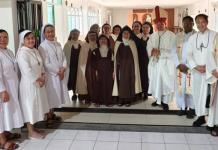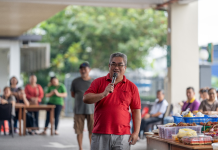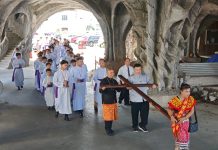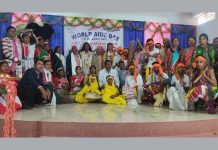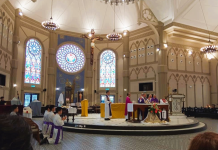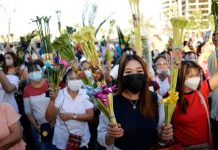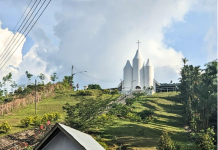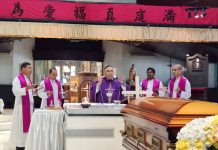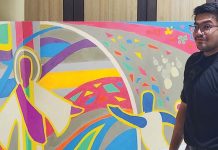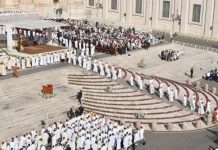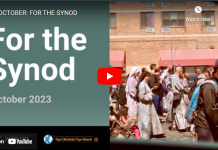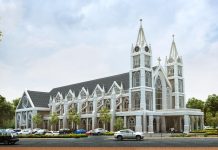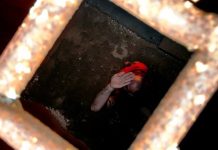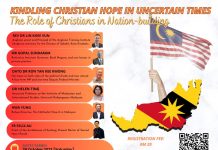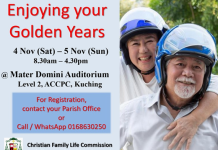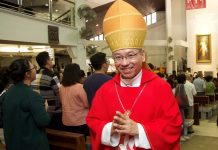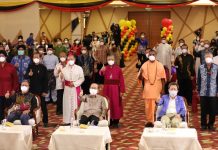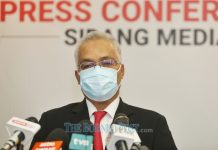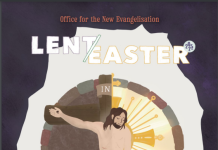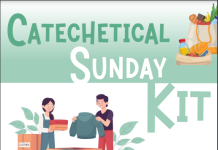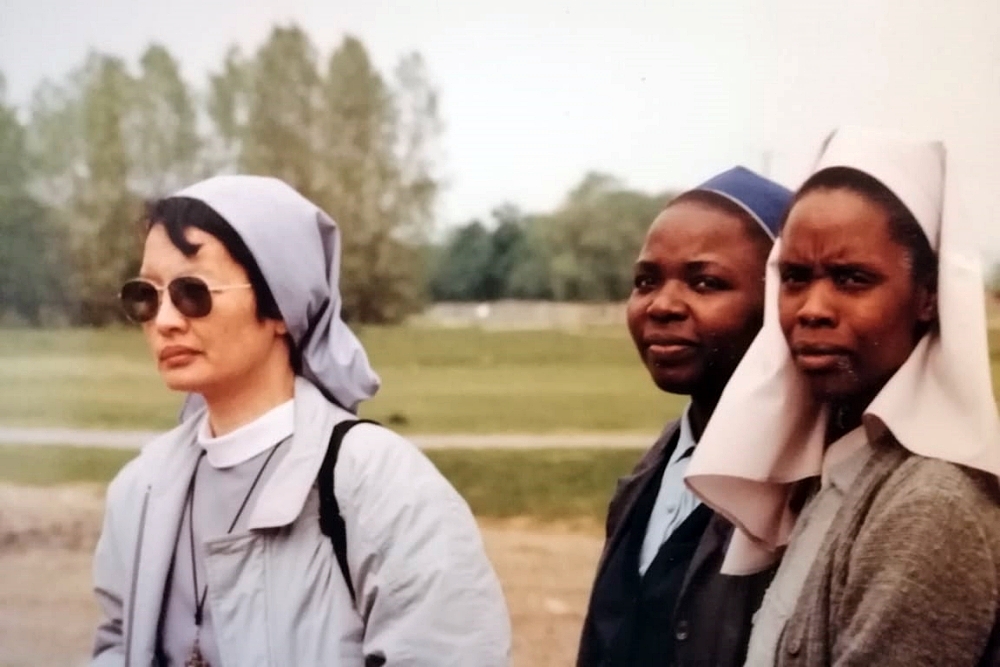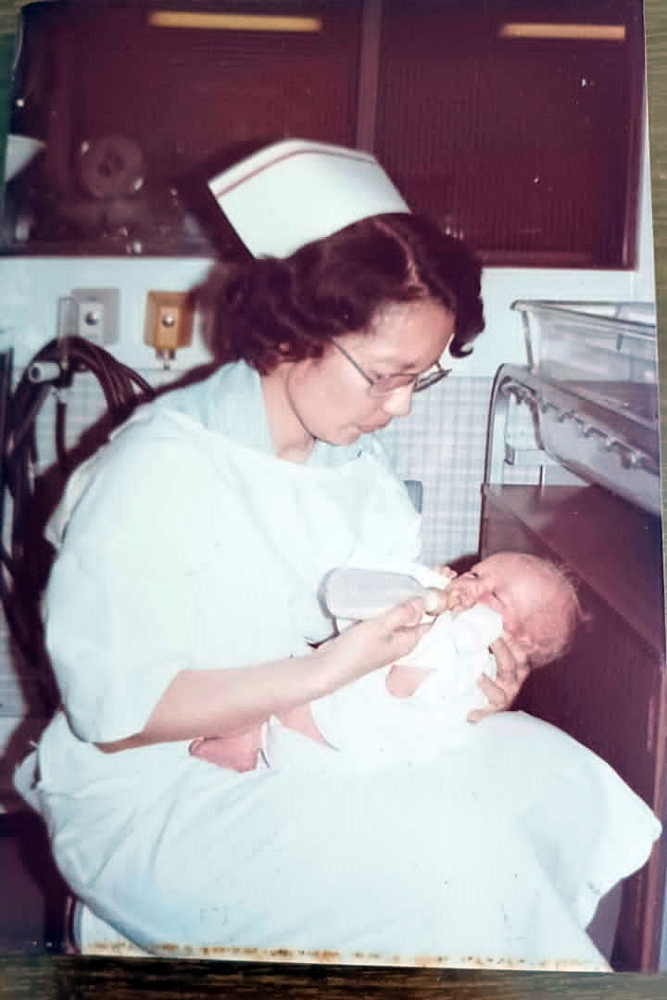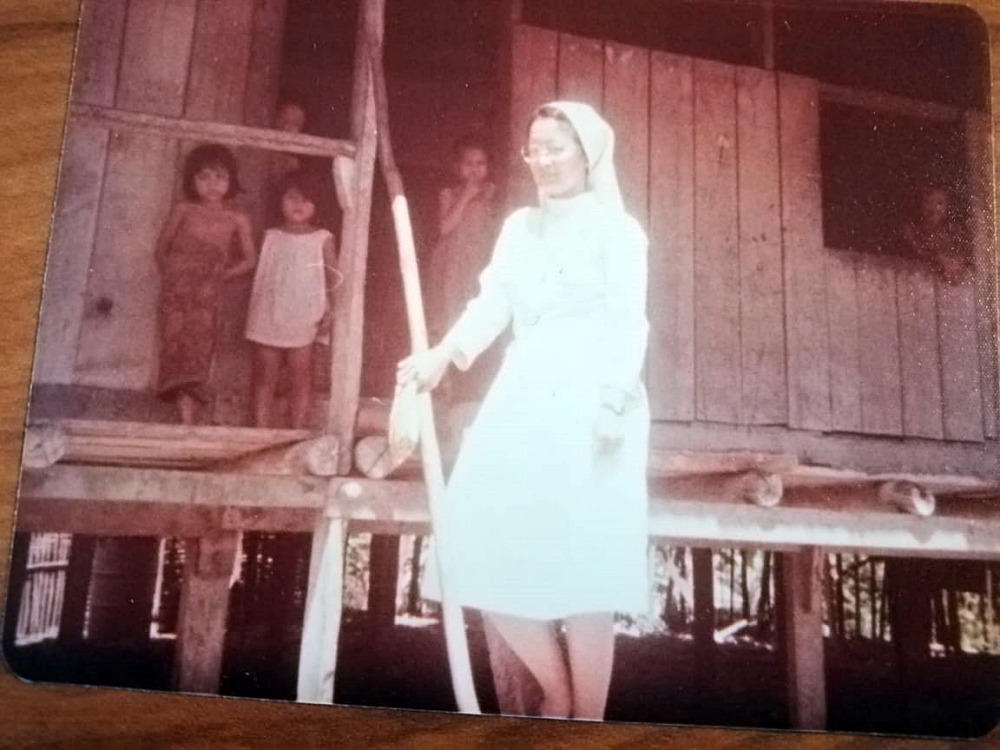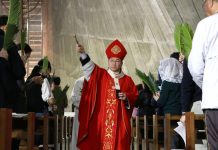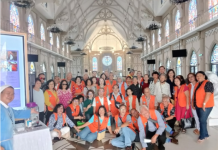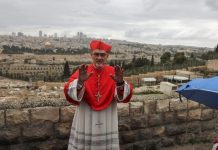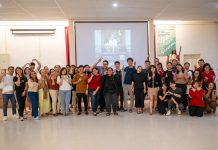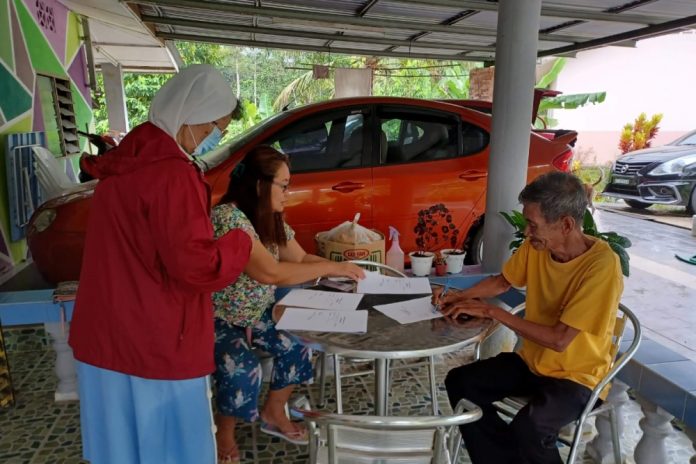
By Chang Yi
KUCHING — SISTER Stella Tan was assigned to St Rita’s Convent in Bau in 2012, where she had served until 2019 carrying out a programme in which the church reached out to the bedridden and housebound individuals.
She was tasked with undertaking monthly visits to the sick, the bedridden and housebound individuals and administering Holy Eucharist to them.
“I believe that throughout those seven years, I have been to nine villages and reached out to around 100 people. From these visits, I was able to see their living conditions and the daily struggles faced by these families.
“That was when I came up with the ‘Food Bank’ project,” says this nursing veteran, now in her early 70s.
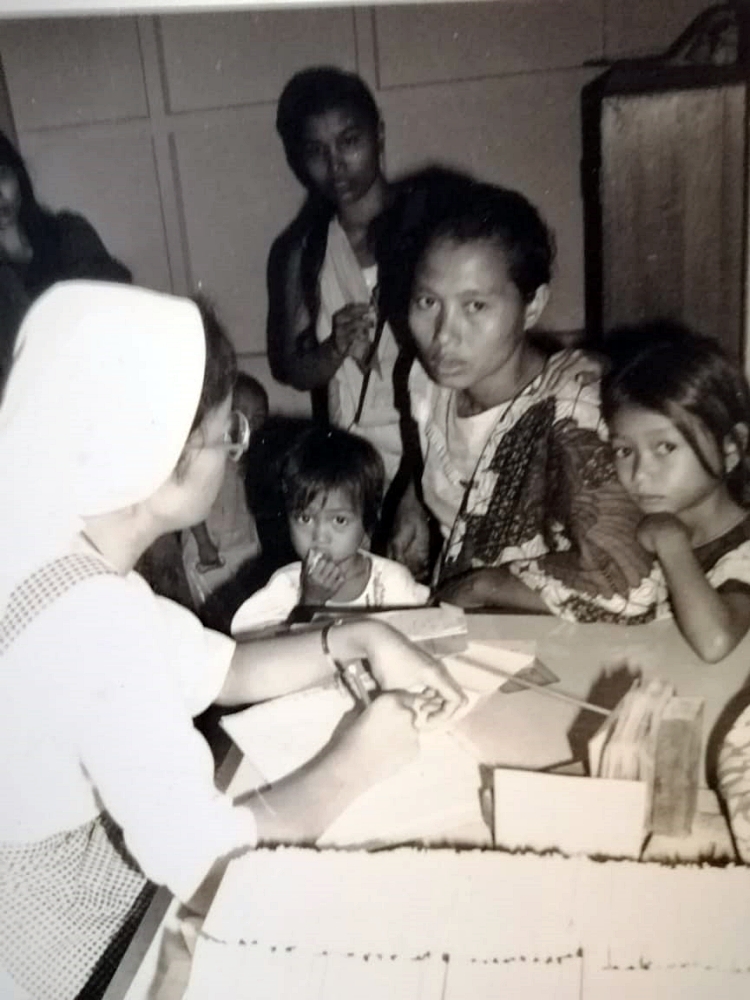
Establishment of concept
Such an initiative was deemed ahead of its time in Sarawak. The modern concept is said to have been developed in the 1960s by American John van Hengel, a regular volunteer of a soup kitchen in his home city Phoenix in Arizona.
He was serving dinner to those in need one night when a young mother told him that she depended on soup kitchens and leftovers from grocery store dumpsters to feed her children.
This conversation triggered the ‘food bank’ idea, where individuals and companies with excess food could ‘deposit it’, and those in need could ‘withdraw it’.
His local parish, St Mary’s Basilica in downtown Phoenix, gave him US$3,000 and an abandoned building where he was able to turn his dream into reality, and in gratitude, he named his food bank ‘St Mary’, which today, is one of the largest food banks in the US.
Van Hengel then went on to become the founder of several other food banks across the country and even founded the national organisation America’s Second Harvest (known today as Feeding America).
Years later, he established the Global Food Banking network.
Arguably, the food bank concept is not entirely modern.
Many of us are familiar with the Bible story of how during the time of Prophet Joseph, the Pharaoh of Egypt had, one night, dreamed of seeing seven healthy cows and seven plump heads of grain (some versions mentioned corn) being engulfed by seven lean cows and seven withered grains, which according to the Prophet, represented seven years of plenty followed by seven years of famine.
From the interpretation of this dream, action was immediately taken to fill up the granaries throughout the period of abundance, so as to prepare for the lean years, which could be considered as a straightforward food crisis management.
‘Food in the Boot’
Sister Stella named her project ‘Food in the Boot’, where she would stock her van with food and other essential supplies to be distributed to the poor and needy folks.
She and her co-workers prepared the food baskets themselves and delivered them to families in need during their monthly visits.
Over time, donors came in and contributed cash and kind, ensuring the continuity of the ‘Food in the Boot’ project.
“It gives me joy and fulfilment whenever I get to meet the needs of the sick, the elderly and the housebound individuals – physically, psychologically and spiritually.”
In May this year, Sister Stella was accorded the Nurses with Global Impact 2023 honour, in conjunction with seventh International Nurses Day celebration.
She was among 13 honourees who attended the awards ceremony at the United Nations (UN) headquarters in New York City.
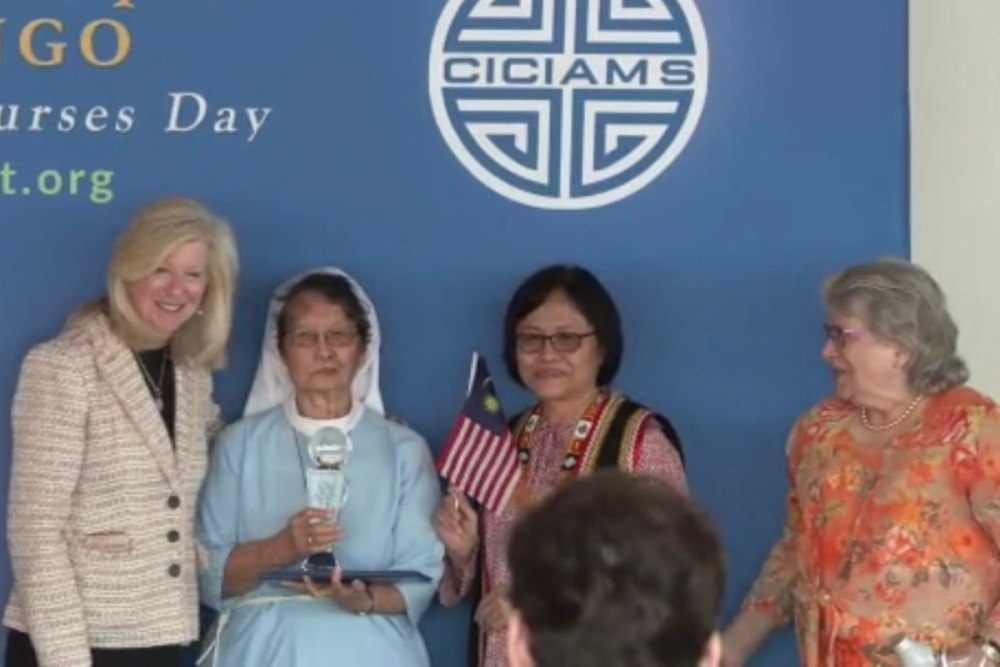
Nurses with Global Impact is a non-profit organisation with the mission to connect, support and celebrate the work of nurses everywhere.
It holds the annual International Nurses Day, which honours nurses from around the world who are impacting lives with quality care and comfort and serving as role models for future generations of caregivers.
Sister Stella’s nomination was submitted by the International Catholic Committee of Nurses and Medico-Social Assistants (CICIAMS).
“Year 2023 has been an incredible one for me, especially after the traumatic years of MCO (Movement Control Order) during the height of the Covid-19 pandemic.
“As a nurse and a nun, I feel blessed to have been able to look back and reflect over my 50 years of service, over this path that I have chosen.”
‘Amare et servire’
Sister Stella comes from a rather big family, having three brothers and four sisters.
Born in 1949, she spent the early part of her childhood in Kuala Belait, Brunei. The family then moved to Tuaran, Sabah where her father hailed from.
A few years later, the family relocated to Kuching, where she underwent primary education at St Teresa’s Convent School under the care of the Franciscan Sisters.
It was after completing her O-Levels that she received religious calling.
“I was touched by the sacrifices of the nuns, and also the school motto ‘Amare et Servire’ (To Love and To Serve),” she said.
In 1970, Sister Stella entered the novitiate under the Sisters of St Francis of Sarawak Convent of Mary Immaculate in Kuching. Two years later, she enrolled in the School of Nursing in the Sarawak General Hospital (SGH).
In 1975 after her graduation, she was posted as a general nurse to St Joseph’s Mission in Kanowit, where she stayed for three months before returning to Kuching to take charge of mobile clinics in villages in the outskirts of the state capital that were accessible by road.
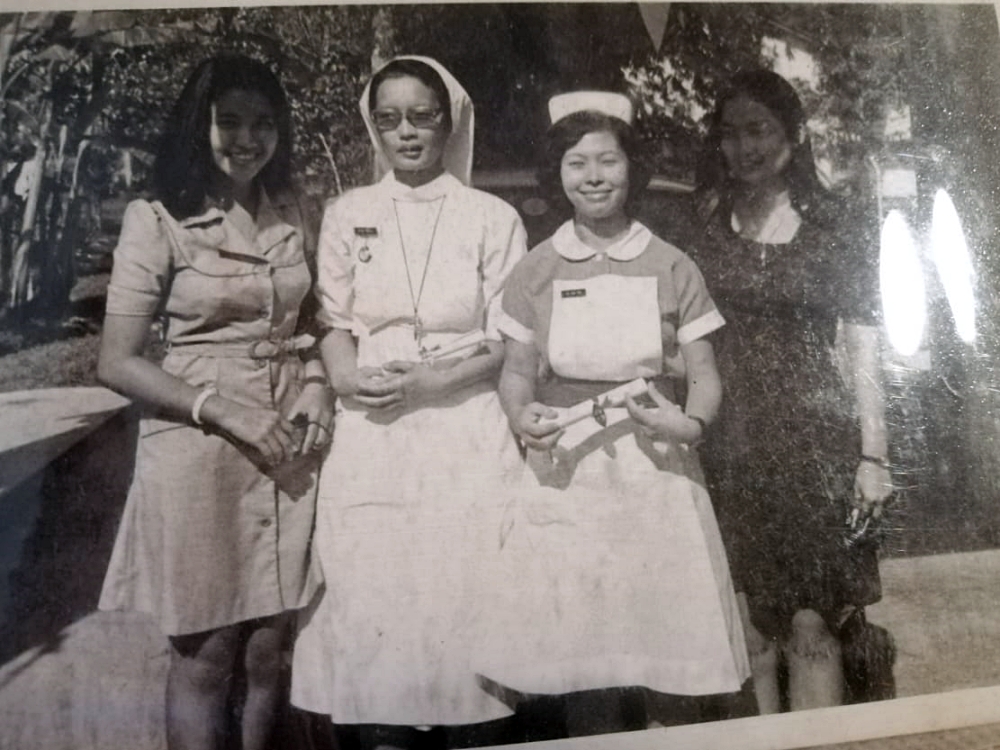
“Back then in Sarawak, it was very difficult to undertake road-travelling – there were not as many vehicles as there are today, and the dust!
“But we strove on.
“Under the visit programme, we were tasked with providing maternal and child healthcare services to the villagers, including immunisation.
“For some patients, we helped with the referrals to the main hospitals.”
In October 1977, Sister Stella was sent to attend a midwifery course at the Withington Hospital in South Manchester, England, where she stayed until November 1978.
She took a break upon her return to Sarawak, before being sent to take charge of the mission clinic at Long San in the Upper Baram, Miri Division, where she served from January 1979 to November 1981.
“Was I scared to go to the ‘ulu’ (remote pockets upriver)?
“Not at all! I knew that the Lord would protect me from any danger be it the strong rapids, wild animals, or even bad people.
“In fact, the Baram experience opened my eyes even more, making me better realise about my responsibilities as a health worker,” she said.
Life in Long San
Baram, back in the 1970s, was mostly accessible via rivers, with a few places by like Bario, Long Lellang, Long Atip and Long Akah reachable via light aircraft.
At a time when even telephone lines were a rarity, Sister Stella stood as a pioneer being a Chinese nurse in a predominantly Kenyah-Kayan region.
A boat-trip to Long San from Miri could take two to three days, depending on the water level.
At the time, she was in her 20s.
“Yes, it was difficult, and at times, helpless, due to severe lack of facilities. There was electricity supply, powered by hydropower, which was running from 7pm to 10pm.
“Even then, power was out regularly so we were still using kerosene lamps. There were times when we had to perform medical procedures like suturing wounds and delivering babies with the room illuminated by torch light and kerosene lamps.
“But all of us were driven by our mission – to help people in any way possible.
“And I would always call upon God to help me and my team.”
Sister Stella said for emergency cases, the patients would have to be sent to Marudi Hospital.
“That was challenging indeed. Back then, the radio call service only operated during regular office hours, and it was almost impossible to call for a Medevac (helicopter).
“Once a pregnant woman came to the clinic after her water broke, but there was no way to bring her to the hospital, as it was a weekend. She had to endure the ordeal for more than 24 hours, because there was no Medevac – there was nothing more that we could do.
“Tragically, the baby died in the womb and not long after, the mother died in front of the husband, the priest and myself!
“Another unfortunate incident was when I was accompanying an unconscious male patient during a boat trip to the nearest district hospital. The journey took eight hours and sadly, the patient did not make it.
“Many times when I had to accompany a patient to Marudi by flight, the helicopter could only get us to the district hospital and I had to find my own way back to the station via longboat.”
In the face of such trials and tribulations throughout her three years in Long San, Sister Stella sought peace and solace in the chapel.
“Faith prevails. I always know I am never alone, as I have God’s presence all around me.
“I’m also happy to have been able to train three nurses at the Long San clinic, who in turn are able to serve their community.”
Invaluable experience
After her Baram tour of duty in the early 1980s, Sister Stella was transferred to the mission clinic in Bau, handling general outpatient medical cases. She was there for seven years.
In 1989, she was brought into the Formation and Social/Pastoral Ministry, under which she underwent a one-year course on human development in England.
Sister Stella was also involved in the Woman’s Ministry of the Association of Churches, where she had dealt with cases of pregnancies out of wedlock.
“We provided shelter to these women until they delivered the babies. In many cases, we helped in arranging adoption.”
From 2004 to 2006, Sister Stella served the Benevolent Society Nursing Home in Sibu, overseeing the elderly residents and attending to their needs.
“It’s all about spending quality time with them, sitting by their beds and listening to their stories,” she said.
From 2007 to 2010, she was assigned to the Church of Mary Immaculate Conception in Kapit and again, her work involved her meeting people, understanding their needs and responding to them accordingly.
Sister Stella was also involved in HIV/AIDS advocacy with a civil society, where they would reach out to the patients and their families, regardless of faith.
“We would also organise and run programmes such as seminars with the inter-faith groups, with the core objective of educating the public through media, posters and pamphlets,” she said.
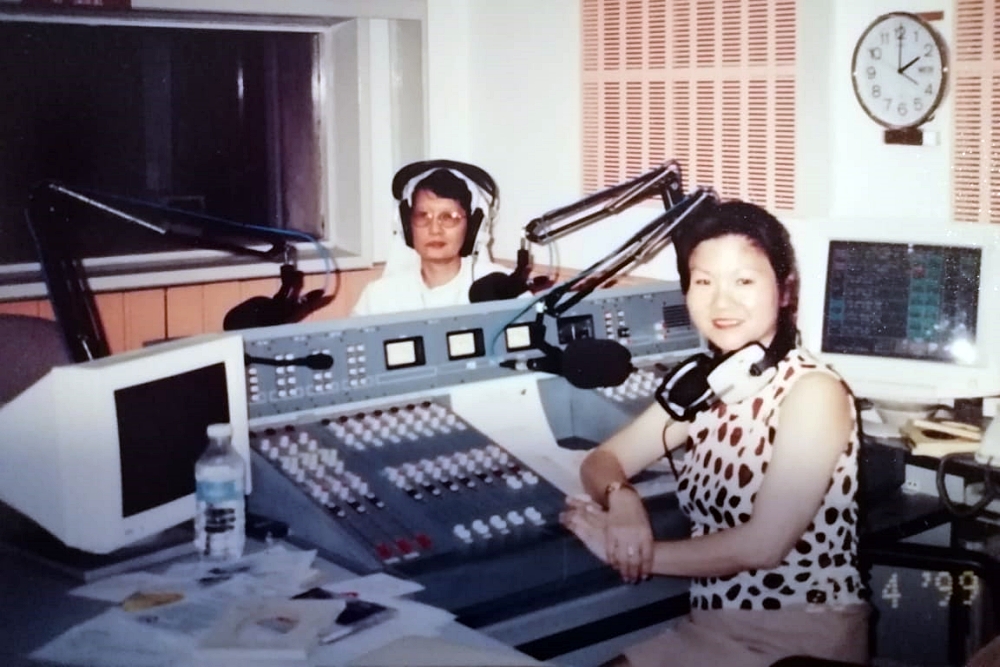
Lockdown woes
In January 2020, Sister Stella returned to Kuching at a time when the whole world was shut down by the Covie-19 pandemic. For her, it was a period of extreme hardship.
“Many people lost their jobs, and farmers could not go to their farms.
“Families with children and elderly individuals found it difficult to put food on the table.
“It was a time of great distress for us too – it was really challenging for us to go out to deliver the food baskets in view of the strict MCO.
“However, we’re able to continue on with the ‘Food in the Boot’ programme, thanks to our generous donors and partners.
“Although now I’m no longer in Bau, our food outreach still continues.”
Indeed, Sister Stella’s contributions as a friend, a mentor, a nurse, an advisor, as well as an ardent believer of her faith, justify the Nurses with Global Impact 2023 honour bestowed upon her.
Her solid commitment and dedication to the nursing profession are truly worthy of emulation.

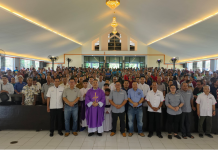
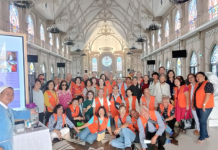
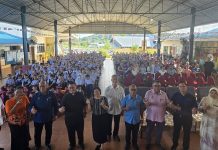
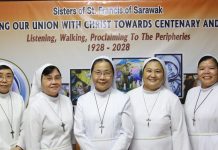
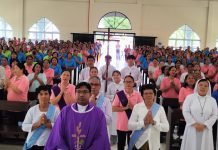
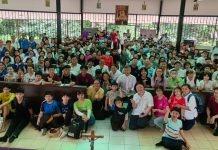

、尤金·玛格拉桑神父(Fr-Eugene-Maglasang)(前排右八)及叶祥胜神父(前排右十)于2025年1月25日在圣体堂合影。(摄影:蔡彼得).jpg)
